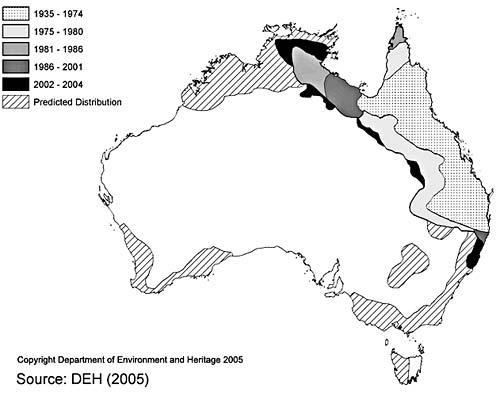Cane toads are widely considered one of the most invasive species in the world. You may have never heard of them, but they are a household name in Australia. They were originally introduced to sugarcane plantations in north Queensland in 1935 to control the beetle population. This resolution failed to a monumental degree. 3,000 were released into the environment, and now, there is approximately 1.5 billion of them! They thrive in Australia in such numbers because they can breed easily and there are few natural predators. These numbers have turned them into a pest species. Their toxic skin kills predators that eat them and is toxic to pets and humans. Australians are working to control the population with efforts such as encouraging the population to catch and kill them. The epidemic is getting exponentially worse as females lay clutches of 8,000 to 30,000.
A fully grown cane toad
In other regions where they are introduced as a method of agricultural plant control (such as the Caribbean Islands and the Pacific), they have been known to eventually destroy parts of the ecosystem. This is a prime example of humans trying and failing to control natural evolution of nature. Studies have shown that introducing cane toads to a region leads to a decline in
biodiversity.

Population distribution of the cane toads in Australia over the past few decades
No comments:
Post a Comment